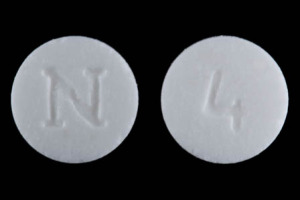Nitrostat Disease Interactions
There are 8 disease interactions with Nitrostat (nitroglycerin).
- AMI
- Anemia
- Hemodialysis
- Hypotension
- Intracranial pressure
- Pericarditis
- Hypertrophic cardiomyopathy
- Glaucoma
Nitrates/nitrites (applies to Nitrostat) AMI
Major Potential Hazard, High plausibility. Applicable conditions: Myocardial Infarction, Congestive Heart Failure
The benefits of organic nitrates and nitrites in patients with acute myocardial infarction (AMI) or congestive heart failure have not been established and its use is not recommended in these settings. If used, it should be accompanied by careful clinical and hemodynamic monitoring to avoid the hazards of systemic hypotension and tachycardia, which in AMI can exacerbate myocardial ischemia. In general, oral or long-acting formulations of these drugs should not be used in the early management of AMI because of the difficulty in precisely controlling and rapidly terminating their hemodynamic effects should adverse reactions occur. Sublingual and other immediate- onset nitrates or nitrites should typically be avoided in suspected AMI with marked bradycardia or tachycardia, and should be used with extreme caution, if at all, in patients with right ventricular or inferior wall infarction. Rarely, sublingual nitroglycerin has produced hypotension accompanied by paradoxical bradycardia in patients with AMI and especially right ventricular infarction. The latter group of patients are also particularly dependent on adequate right ventricular preload to maintain cardiac output and can experience profound hypotension with nitrate or nitrite administration due to reduction of right ventricular preload.
Nitrates/nitrites (applies to Nitrostat) anemia
Major Potential Hazard, High plausibility.
Some manufacturers and medical references consider the use of nitrates and nitrites to be contraindicated in patients with severe anemia. Nitrates and nitrites can cause methemoglobinemia, primarily in high-dose intravenous therapy or acute poisoning and in patients with NADH reductase deficiency. However, elevations of methemoglobin may also occur with commonly used dosages. While probably not of routine clinical significance, the increases may be important in certain patient populations such as those with coronary insufficiency or anemia.
Nitrates/nitrites (applies to Nitrostat) hemodialysis
Major Potential Hazard, High plausibility.
The combined effect of organic nitrates or nitrites with hemodialysis, which often lowers blood pressure, can cause life-threatening hypotension. Therapy with these agents should be administered cautiously in patients requiring hemodialysis. The medication should be withheld before undergoing dialysis, and hemodynamic stability should be established prior to resumption of medication following dialysis. Nitroglycerin and isosorbide dinitrate are moderately dialyzed.
Nitrates/nitrites (applies to Nitrostat) hypotension
Major Potential Hazard, High plausibility. Applicable conditions: Constrictive Pericarditis, Dehydration, Cerebrovascular Insufficiency, Shock, Aortic Stenosis
Organic nitrates and nitrites may cause severe hypotension, syncope and shock, even with small doses. Hypotension induced by these agents may be accompanied by paradoxical bradycardia and increased angina pectoris. Therapy with nitrates and nitrites should be administered cautiously in patients who are volume-depleted or hypotensive (e.g., systolic blood pressure <90 mm Hg) or who, because of inadequate circulation to the brain or to other vital organs, would be unusually compromised by undue hypotension. Patients should be in a sitting or recumbent position during and immediately after drug administration, and monitored for symptoms of severe hypotension such as nausea, vomiting, weakness, pallor, perspiration, and syncope. Nitrate or nitrite therapy is considered contraindicated in patients with acute circulatory failure or shock.
Nitrates/nitrites (applies to Nitrostat) intracranial pressure
Major Potential Hazard, High plausibility. Applicable conditions: Head Injury, Intracranial Hemorrhage, Intracranial Hypertension, Brain/Intracranial Tumor
Organic nitrates and nitrites can increase cerebrospinal fluid pressure. Therapy with these agents should be administered cautiously, if at all, in patients with or at risk for intracranial hypertension, including those with cerebral hemorrhage, intracranial lesions, or recent head trauma.
Nitroglycerin (IV) (applies to Nitrostat) pericarditis
Major Potential Hazard, High plausibility. Applicable conditions: Constrictive Pericarditis, Pericardial Tamponade, Restrictive Cardiomyopathy
The use of intravenous nitroglycerin is contraindicated in patients with constrictive pericarditis, pericardial tamponade, or restrictive cardiomyopathy. In these patients, cardiac output is dependent upon venous return, which can be reduced by nitroglycerin due to venous pooling. Also, nitroglycerin-induced hypotension may lead to paradoxical bradycardia and increased angina pectoris.
Nitrates/nitrites (applies to Nitrostat) hypertrophic cardiomyopathy
Moderate Potential Hazard, High plausibility.
Organic nitrates and nitrites may aggravate the angina associated with hypertrophic cardiomyopathy and should be administered cautiously in patients with this condition.
Nitrates/nitrites (applies to Nitrostat) glaucoma
Minor Potential Hazard, Low plausibility. Applicable conditions: Glaucoma/Intraocular Hypertension
Some medical references state that organic nitrates and nitrites may increase intraocular pressure and should be used with caution in patients with glaucoma. However, the effect on intraocular pressure is variable and brief, and there is no evidence that these drugs precipitate narrow-angle glaucoma. Amyl nitrate typically may cause a slight rise of 3+ mm for several seconds followed by a fall in intraocular pressure for 10 to 20 minutes, the latter secondary to a fall in blood pressure. Nitroglycerin rarely produces ocular side effects, and oral nitroglycerin appears to have few to no significant ocular side effects.
Switch to professional interaction data
Nitrostat drug interactions
There are 262 drug interactions with Nitrostat (nitroglycerin).
Nitrostat alcohol/food interactions
There is 1 alcohol/food interaction with Nitrostat (nitroglycerin).
More about Nitrostat (nitroglycerin)
- Nitrostat consumer information
- Check interactions
- Compare alternatives
- Pricing & coupons
- Reviews (3)
- Drug images
- Side effects
- Dosage information
- During pregnancy
- Generic availability
- Drug class: antianginal agents
- Breastfeeding
- En español
Related treatment guides
Drug Interaction Classification
| Highly clinically significant. Avoid combinations; the risk of the interaction outweighs the benefit. | |
| Moderately clinically significant. Usually avoid combinations; use it only under special circumstances. | |
| Minimally clinically significant. Minimize risk; assess risk and consider an alternative drug, take steps to circumvent the interaction risk and/or institute a monitoring plan. | |
| No interaction information available. |
See also:
Further information
Always consult your healthcare provider to ensure the information displayed on this page applies to your personal circumstances.


